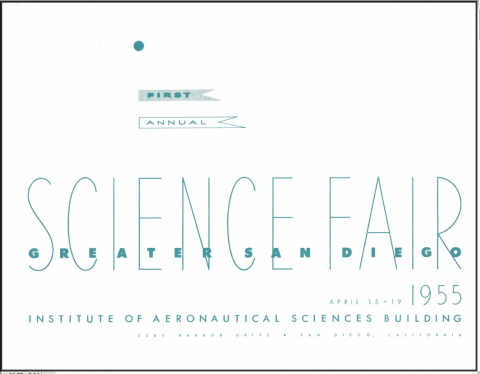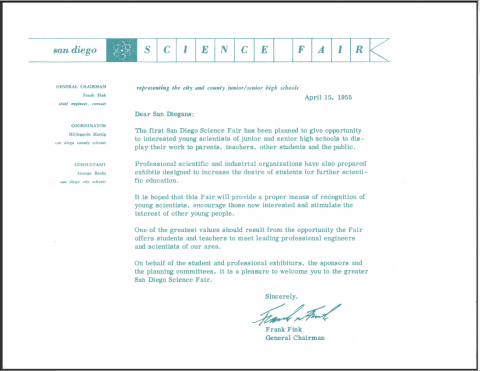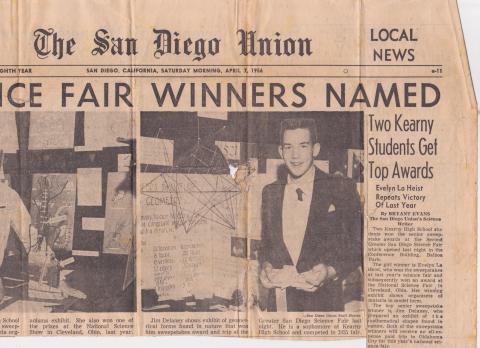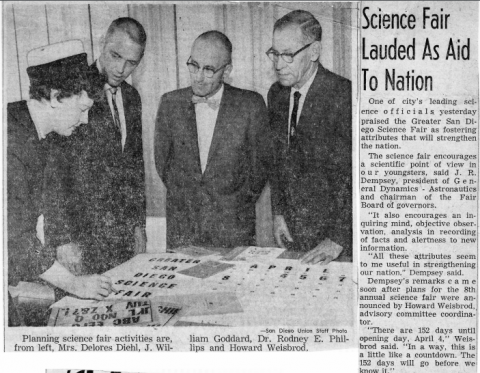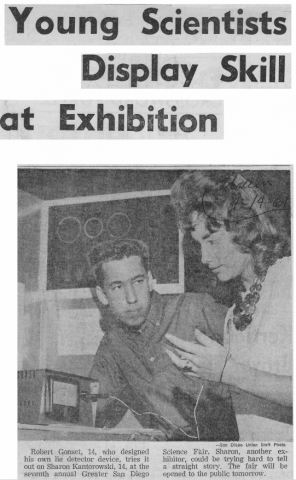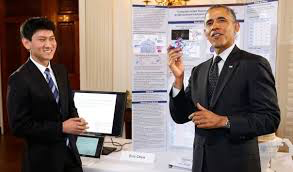Since 1955, the GREATER SAN DIEGO SCIENCE AND ENGINEERING FAIR (GSDSEF) has provided an inspiring experience in science and engineering for tens of thousands of San Diego and Imperial County students, motivating them to pursue careers in science, technology, engineering, and mathematics. This regional competition challenges students to go beyond classroom studies to do independent research – to ask compelling questions, to design and implement innovative solutions, and to present and defend results to judges who are professionals in their fields.
History of the Greater San Diego Science Fair -
(an excerpt of a "Report on the Greater San Diego Science Fair" written by Paul A. Terry, Executive Director, Greater San Diego Science Fair, 1962)
"A group of San Diego scientists and educators met in the spring of 1954 to discuss the possibility of having a Science Fair in San Diego. Representatives of The San Diego Union shared the enthusiasm of this group for the benefits of such a fair.
The purpose of the Fair is to encourage the scientific and technical interests of young people. The Fair stimulates students to actively apply their scientific talents. Community recognition and the opportunity for exposure to scientists and scientific installations are provided in order to encourage talented youths to enter scientific careers.
The San Diego Union agreed to act as a sponsor and to provide for sending of the two sweepstakes winners to the National Science Fair each year. Incident to sponsorship of the Fair, The San Diego Union entered into a promotional agreement with the National Science Fair, Washington, D.C. Accordingly, the Greater San Diego Science Fair affiliated with the National Science Fair of Science Service. The affiliating agreement provided for an executive secretary and general chairman, and the basic administration of the Fair.
The first Greater San Diego Science Fair was held in 1955 at the Institute of Aeronautical Sciences on Harbor Boulevard.
Space considerations limited the Fair to 53 exhibits, which were selected from a total of 100 science projects. The possibility of entering an exhibit in the Fair was, as it is now, extended to any student in grades 7 through 12 in a public, private or parochial school in San Diego County. Entrants from grades 7 through 9 compose the junior division, and entrants from grades 10 through 12 compose the senior division.
By 1956, interest in the Fair had grown to such proportions that it was decided to move the Fair to the Conference Building at Balboa Park. That year 194 projects were selected from some 750 projects viewed at 15 local and school fairs. Ten industrial, educational and military facilities offered guided tours and briefings to the students... These tours and briefings contribute to the concrete knowledge of the student, as well as providing him with an opportunity to meet scientists at work...
In 1957, the Science Fair was again held in the Conference Building. The Fair had grown to 238 exhibits, which were selected from 1,200 projects...
"The 1959 Fair had grown to 250 exhibits, which created such a parking problem near the Conference Building that the Fair was moved in 1960 to the Federal Building in Balboa Park, where it has remained."
By 1961, the Greater San Diego Science "Fair was not only as large as the National Science Fair, but of comparable quality... The boy and girl sweepstakes winners placed first and fourth at the National Science Fair-International held that year in Kansas City...
Also in 1961, professional societies provided awards and "the Screening Committee was now becoming active." 324 entrants "were selected from approximately 3,000 exhibits screened at many local and school fairs."
The GSDSEF fosters creativity and innovation through inquiry, celebrates students’ STEM achievements, and showcases how young minds can make an impact in the present and future.
Inspirational…motivational…transformative… For over 60 years, the GSDSEF has been encouraging young minds in their pursuits that will define the next generation of scientific thought, discovery, and innovation.
|
|
|

